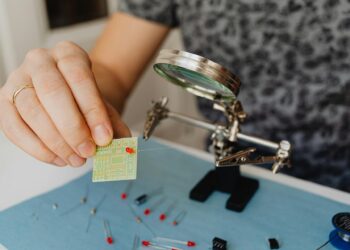Every year, over 500,000 women across the globe succumb to breast cancer. The good news is that mammography (breast cancer screening) can drastically reduce this number. For instance, a paper published in 2020 revealed that women who regularly undergo mammography have a 41% lower chance of dying from breast cancer.
The challenge is the shortage of qualified radiologists. Breast cancer screening is becoming increasingly difficult due to this shortage, in the US and globally. Additionally, the workload on existing doctors is only increasing. A new study reveals that using artificial intelligence for breast cancer screening can solve this problem.

The study authors trained a commercially available AI to detect and highlight suspicious lesions. When they tested their AI program for screening over 50,000 women, they found that AI can not only lessen the workload of radiologists but also improve diagnosis. Specifically, AI can reduce the number of false positive findings.
“AI may be safely implemented into breast cancer screening to reduce workload, reallocate radiologist resources to where they are most needed, lower false-positive recalls, and possibly detect a larger proportion of breast cancers in women attending screening,” Andreas D. Lauritzen, lead author, and a postdoc student at the University of Copenhagen, told ZME Science.
Here is how AI-assisted mammography works
The AI system used by the researchers for their study was trained using deep learning models. It is essentially a breast cancer detection tool that seeks suspicious lesions in mammograms.

This AI program has two stages. Firstly, it selects screenings, which are likely normal and can be read by a single radiologist instead of two. Secondly, it assists radiologists in reading screenings with elevated risk of breast cancer by displaying lesion markings.
The researchers conducted an interesting experiment to test the performance and accuracy of their AI program. They screened two groups: the first had 60,751 women whose mammograms were ready by two radiologists without AI; the second had 58,246 women who were screened for breast cancer by the AI.
If the AI program found the mammogram of a woman normal, it was further checked by one radiologist. However, if the AI noticed something suspicious, it was then checked by two radiologists. Overall, in the second group, 66.9% of these mammograms were single-read by one radiologist, and 33.1% were double-read with AI assistance.
When the study authors compared the mammography results of the two groups, they found that “Screening with AI improved the cancer detection rate (0.70% before AI vs 0.82% with AI), and decreased the radiologist reading workload by 33.5% (38 977 of 116 492 reads).”
AI also cut down false-positive findings
Being recalled for diagnostic tests as a result of false-positive findings is a problem for both the patient and the radiologists.
For instance, in Denmark, where the study is conducted, recalled patients have to go through diagnostic tests including palpation, ultrasound, supplemental mammography or tomosynthesis (3D mammogram), and possibly a needle biopsy. This is stressful, sometimes painful, and time-consuming.
“This is a very uncomfortable process and is associated with anxiety about the result. For radiologists, diagnostic testing is a very time-consuming task, and in terms of spent time, a single diagnostic test is equivalent to 50 screening reads,” Lauritzen said.
The results of the current study suggest that using AI for mammography can reduce the recall rate by 20% and significantly improve the positive predictive value (33.5% with AI versus 22.5% without AI).
Positive predictive value is a screening performance indicator that describes how well the screening program is at recalling women who have breast cancer and not recalling women who don’t have breast cancer.
“We recalled considerably fewer women who are healthy or have benign findings, which puts fewer women unnecessarily through the uncomfortable process of diagnostic testing. It also frees up time for the radiologists to spend time on women with a higher risk of having breast cancer,” Lauritzen added.
AI should be adopted, but with a strategy in mind
The study authors claim that their AI is very accurate and that any screening center or hospital can easily install such an AI system and start receiving reports within minutes of cancer testing. However, it’s important to use the system correctly in tandem with the radiologists.
“For instance, in our screening program, all screenings are read by at least one senior specialized breast radiologist who determines whether to recall. One cannot expect that AI alone can solve all the challenges related to breast cancer screening. We must extensively study,” Lauritzen told ZME Science.
Therefore, it is also important to develop a good strategy for how radiologists use and interact with AI. The study authors also hope that, in the future, AI will also be used to make screening more accessible for women in both developed and underdeveloped countries.
The study is published in the journal Radiology.






